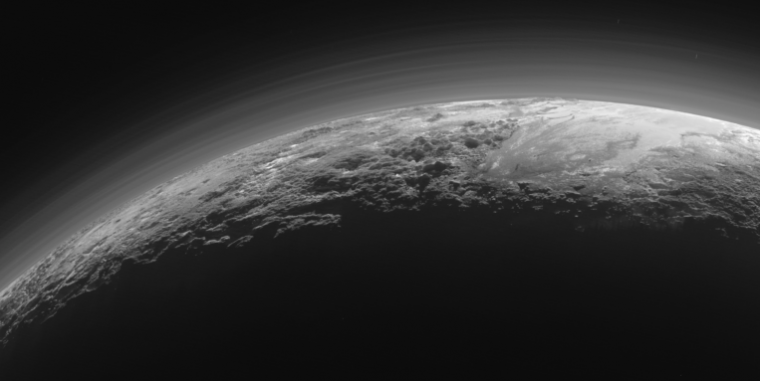Like Titan, Pluto’s atmosphere is hazy, but for a different reason

Enlarge / Pluto's atmosphere is fairly hazy. (credit: NASA)
Saturn's moon Titan is distinctive, in part for its orange-ish and hazy atmosphere. It's virtually impossible to see surface features because the haze is so opaque in the visible portion of the spectrum; what we know of it comes from things like radar imagery, instead. The haze is the product of chemical reactions in the upper atmosphere, driven by ultraviolet radiation. These then cascade into larger and more complex organic (reminder: that doesn't mean biological) molecules.
The New Horizons mission to Pluto showed that the dwarf planet, too, has a haze. It's less prominent in Pluto's meager atmosphere, but it is there (it's actually similar to the one on Neptune's moon Triton). Because Pluto's atmosphere isn't that different from the upper reaches of Titan's atmosphere, it has been thought that the same chemistry is responsible.
But a new study led by Panayotis Lavvas at the University of Reims Champagne-Ardenne shows that Pluto's haze may require a different explanation. On both bodies, the atmosphere contains methane, carbon monoxide, and nitrogen. But if Titan's process worked at the same rate on Pluto, it wouldn't make enough haze particles to match what we've measured there. As Pluto's atmosphere is even colder than the upper atmosphere on Titan, that haze particle chemistry should be running slower on Pluto.
Read 7 remaining paragraphs | Comments